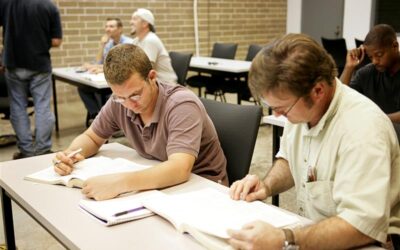By Kevin Roberts
Last time we left off with a discussion of Technician A and Technician B questions. Clearly, this makes the question do the work of two questions. Instead of needing to know a single fact, the test taker must evaluate the statements of both techs. This makes the question more difficult.
Let’s talk about difficulty.
Difficulty in any arena is a coin with two sides. On the one side, it is, well, difficult, and, therefore, painful. On the other side, that difficulty provides value. If winning an Olympic Gold Medal were easy, this would not only take away value, but it would also take away meaning.
Also, difficulty is not without nuance.
First, difficulty is healthy. Physical exercise produces damage at the cellular level. It is in the recovery of that damage that makes you stronger. As Nietzsche famously said, “What does not destroy me makes me stronger.”
Second, not all difficulties are created equal. In our last article, we described how “hard writing makes for easy reading.” Understanding what the question is asking should be made as easy as possible for the test taker. Knowing the correct answer is difficult enough.
Third, it is in the attitude of the test taker that the battle is won or lost. I had to send a tech on a service call many years ago in which a wiring harness dropped onto the semi tractor driveshaft. Instead of simply wearing away the insulation, the harness was caught in the driveshaft and wound it up like a bird’s nest. The truck died in the middle of a busy street. The tech told me, “This should be fun, I can’t wait to get there,” and clearly, he meant it. He did not show or voice any reluctance to have at it. That is the attitude that helps you face and overcome difficulty. Try to see life as an adventure rather than a burden.
Finally, in a previous article, I mentioned the necessity of getting out of your comfort zone. Unfortunately, this is viewed as a cliché. But remember this, calling something a cliché says more about the person speaking than the cliché itself. Most clichés are profound truths learned by society over decades or even centuries but often belittled by later generations. If you are not disposed to face difficulties with a positive attitude, if you avoid getting outside your comfort zone, then you are limiting the opportunity that lies before you. As a human who is self-aware, there are times you can choose to stretch your boundaries. All you need is to develop an objective mindset about how far and how fast to do so. Start small, stay consistent, and gradually improve. Humans are odd creatures. The tendencies are to either wallow in the present or so vigorously engage the future that you bite off more than you can chew. Think of physical exercise. Some never enact their New Year’s resolutions. Others dive in with such enthusiasm that they injure themselves and become discouraged. Be aware of your own tendencies and begin with small steps. Do you want to do 100 pushups? Start with 10, or five, or one. You see, the converse of the above Nietzsche quote is also true, “That which destroys you does not make you stronger.”
So, how do you find that balance?
- Face the difficulty full on, don’t lie to yourself.
- Start small, stay consistent, and gradually improve.
- Set aside a consistent time that you can devote to studying.
Whether in the early mornings, evenings, or weekend afternoons, simply do whatever works for you. Make a commitment to yourself or a friend. Establish accountability. Either keep track yourself (written) or have a friend hold you accountable. Better yet for some, study together.
It need not be three-hour marathon study sessions. It is far better to learn two new word definitions than to try (and fail) to learn 20.
Then, get your notebook or word processor and prepare to develop your own review documents. This is an important key to effective study. Your short-term memory is not sufficient to retain what you learn simply by reading. Plus, it is too easy to slip out of reading and fall into scanning and skimming. This doesn’t work when you are reading factory service information about an unfamiliar system, and it doesn’t work with studying for a certification test. You must fully engage with the material in the moment. You must “see” what you are looking at. This is the difficulty that we face.
If you download the Learning Objectives from the Emergency Vehicle Technician Certification Commission (EVTCC) Web site, you can find every topic that will be addressed by any test question you will face.
Highlight the key terms in the Learning Objectives. Then, get yourself a dictionary and look up what the words mean. I am continually surprised how many students use words that they don’t completely understand. (Quick, what is a volt?)
I think if this was the only study you performed, you would have a reasonable expectation to pass most tests.
To proceed, read through the Learning Objectives and write down any question that you would ask an instructor if you were in class. The key is to write them down. And you must leave space between the questions for the answer. Writing them down helps you remember them. Going through the Reference Material will allow you to find the answers so that you can also write them down as well.
Do you find that reading the Reference Material also raises questions? Perhaps more questions than answers?
Stop for a moment.
If you asked yourself that question before you read it from me, congratulations. You just experienced exactly what I am attempting to describe. You engaged with what you were reading and critically evaluated it. If you can do that with the Reference Material, your odds of passing the test increase significantly.
So far, we have described phase one of the study process:
- Read the Learning Objectives
- Learn all the definitions.
- Write down questions.
- Read the Reference Material.
- Write down answers to the above questions.
- Write down further questions.
- Keep reading until you find the answers.
- Or find someone to ask.
- When it comes to test preparation, hope is a four-letter word.
Next time: Using practice questions.






